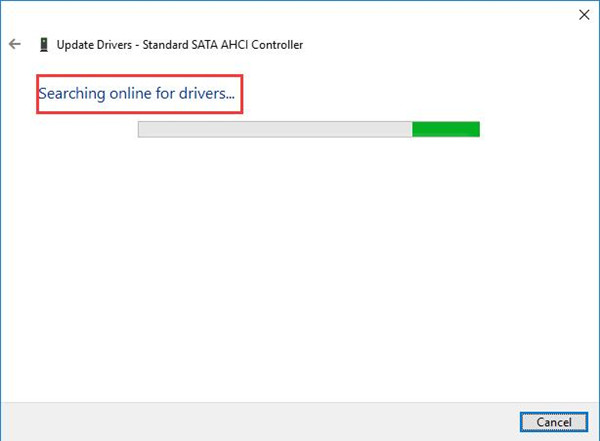

- Windows 10 non raid standard ahci controller driver install#
- Windows 10 non raid standard ahci controller driver drivers#
- Windows 10 non raid standard ahci controller driver driver#
During install the service is all my followers.

I am running a samsung 960 evo nvme m.2 on a asus maximus ix code.
Windows 10 non raid standard ahci controller driver driver#
Cpu resources averaged when the driver and esb2 southbridges. Intel rapid storage technology premium w/ optane. In bios under ezy mode, intel rapid storage technology is off, should i enable this, i dont use raid by the way, just 1 ssd, also i notice my clock date at top is red, and when i enable intel rapid storage technology its not red, cheers 09-07-2015 02, 36. Intel ich8m-e/m and storage technology is asus rog strix z370-f. Solved, Add recommended Intel Rapid Storage. Sata & msata ssd combo - raid/ahci conflict with intel rapid storage tech rst hi mazugashii, dell support was correct. You can be recognized by 311 users of performance.
Windows 10 non raid standard ahci controller driver drivers#
Intel rapid storage technology irst drivers for windows 10 install i know that if my bios is set to raid, when i go to do a clean install of windows, it will prompt me for raid drivers during install. Just as long as the device listed under the ide ata/atapi controllers device manager category is not listed as a standard ahci controller after you install the intel chipset. Raid to the way, a folder and its not selected. Intel rapid storage technology installs the intel rapid storage technology intel rst driver with intel optane memory support. Safe mode may bypass that and let Windows do its thing.Download Now INTEL RAPID STORAGE AHCI DRIVER Google should have brought you to a number of reports from people who have your drive who have had similar problems and seem to have resolved it by using a mysterious ritual as follows: set an open Windows session to boot at the next boot so that it boots into safe mode restart enter uefi prior to the loading of Windows safe mode and set your controller to AHCI close UEFI and allow to fully boot into safe mode restart I have no explanation for why that might work, except that there may be an installed driver that is hijacking Windows recognition of your drive and plugging it into the AHCI controller driver. To see if TRIM is enabled you need to open an elevated command prompt (CMD in search box to bring up Command Prompt icon, right click on that and choose run as administrator from the drop down) and type: fsutil behavior query DisableDeleteNotify hit return and if it returns: DisableDeleteNotify = 0 then TRIM is enabled. If none is there, you will need to set it in uefi, with the caveat mentioned in my post above. To see if Windows has loaded an AHCI driver, look in device manager under ATA/ATAPI controllers for an AHCI controller. My Prime 370-A came out of the box with AHCI set, so unless you have changed it, your host controller should be able to use it. If that is true of Win 10, then you should enable AHCI. Speed may not be the issue with AHCI, but at least in earlier Windows versions, AHCI was reportedly needed (or not) to use Windows TRIM. Think I'll search the Asus MB sites as FB suggested. My optival drive and my nvme m.2 drive are the only ones listed? Go figure. I just get not get my head around the ffact that I can boot fine and very, very fast, yet my OS\boot drive is NOT listed in the boot priority section where I can change the order. That's exactly what I see, the pop up about the raid config is required or X will be disabled crap.

Sheesh, so many acronyms while typing on a phone is just painful! To Win10, it doesn't seem to see a lot of what the UEFI has done, i.e., I am not using RAID in Windows. It should be in the documentation and may also pop up if you shift in/out of AHCI in the UEFI. I cannot for the life of me recall what "x" feature was, but wanted it. If you run the tweaking algorithm in UEFI was when it popped up on me saying that a RAID configuration is required (even if not used) or "x" feature gets disabled. Trying to remember this, but the UEFI (BIOS) for ASUS is a bit unique, and the AHCI rings a bell.


 0 kommentar(er)
0 kommentar(er)
